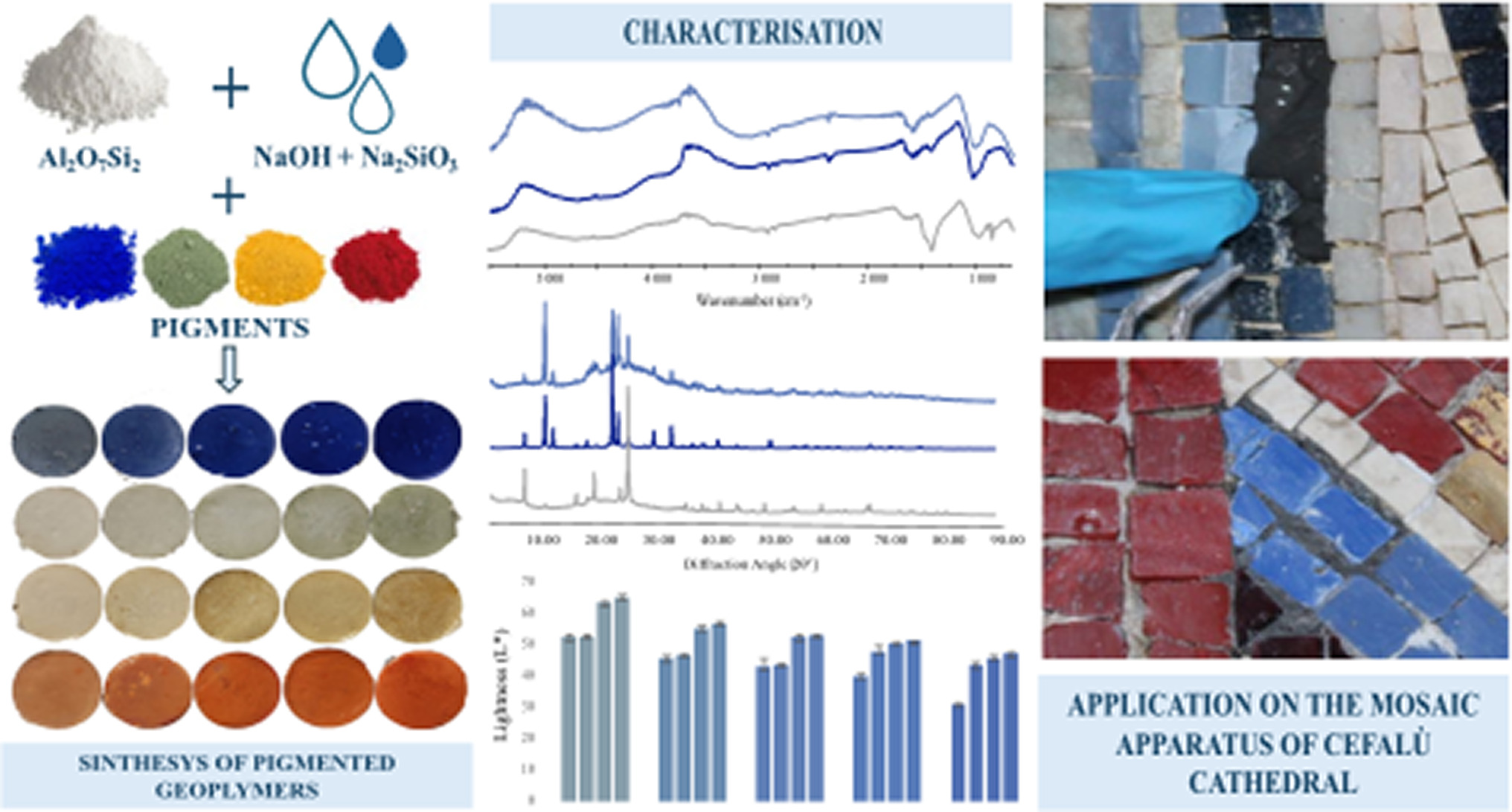https://doi.org/10.1140/epjp/s13360-025-06420-y
Regular Article
Synthesis, characterisation and application of pigmented geopolymers to the pilot site of the UNESCO Cefalù Cathedral (Sicily, Italy)
1
Department of Biological, Geological and Environmental Sciences, University of Catania, Catania, Italy
2
Department of Humanities, University of Catania, Catania, Italy
3
Piacenti S.p.a., Prato, Italy
Received:
7
November
2024
Accepted:
10
May
2025
Published online:
4
June
2025
In the last few decades, the field of Cultural Heritage conservation and restoration experienced the development of new materials that are progressively equalling, and in some cases replacing, the traditional ones. The aim of this paper is to develop geopolymers specifically designed for the application in the conservation of polychrome surfaces, particularly of mosaics. The new geopolymeric tesserae were produced from commercial metakaolin mixed with an alkaline solution of sodium hydroxide and sodium silicate and coloured with different types of organic and inorganic pigments added in the percentages of 1, 3, 6, 9, and 12 wt.%. The products obtained were studied through a multi-analytical approach considering colourimetric, physical–mechanical, molecular and mineralogical aspects. Preliminary chromatic compatibility tests conducted on both pigmented geopolymers, and original mosaic tesserae demonstrate that geopolymers are highly suitable for the conservation and restoration of mosaic lacunae (with colour difference values between original tesserae and restoration materials often below 10 units), offering a valid alternative to the use of glass-paste tesserae. The analytical results and the promising aesthetic performance confirmed their suitability for the stated purposes. Therefore, with the collaboration of the restorers, it was possible to proceed with the application of the pigmented geopolymeric tesserae on the magnificent Byzantine mosaic of the Cefalù Cathedral, one of the most appreciated in Italy. The successful application, especially of the tesserae pigmented with Ultramarine Blue, confirmed their aesthetic and functional suitability for the restoration of high historical and artistic value mosaics. Moreover, the chemical-physical stability of these materials was evidenced by the lack of efflorescence formation, suggesting a good degradation tolerance.
Copyright comment Springer Nature or its licensor (e.g. a society or other partner) holds exclusive rights to this article under a publishing agreement with the author(s) or other rightsholder(s); author self-archiving of the accepted manuscript version of this article is solely governed by the terms of such publishing agreement and applicable law.
© The Author(s), under exclusive licence to Società Italiana di Fisica and Springer-Verlag GmbH Germany, part of Springer Nature 2025
Springer Nature or its licensor (e.g. a society or other partner) holds exclusive rights to this article under a publishing agreement with the author(s) or other rightsholder(s); author self-archiving of the accepted manuscript version of this article is solely governed by the terms of such publishing agreement and applicable law.





